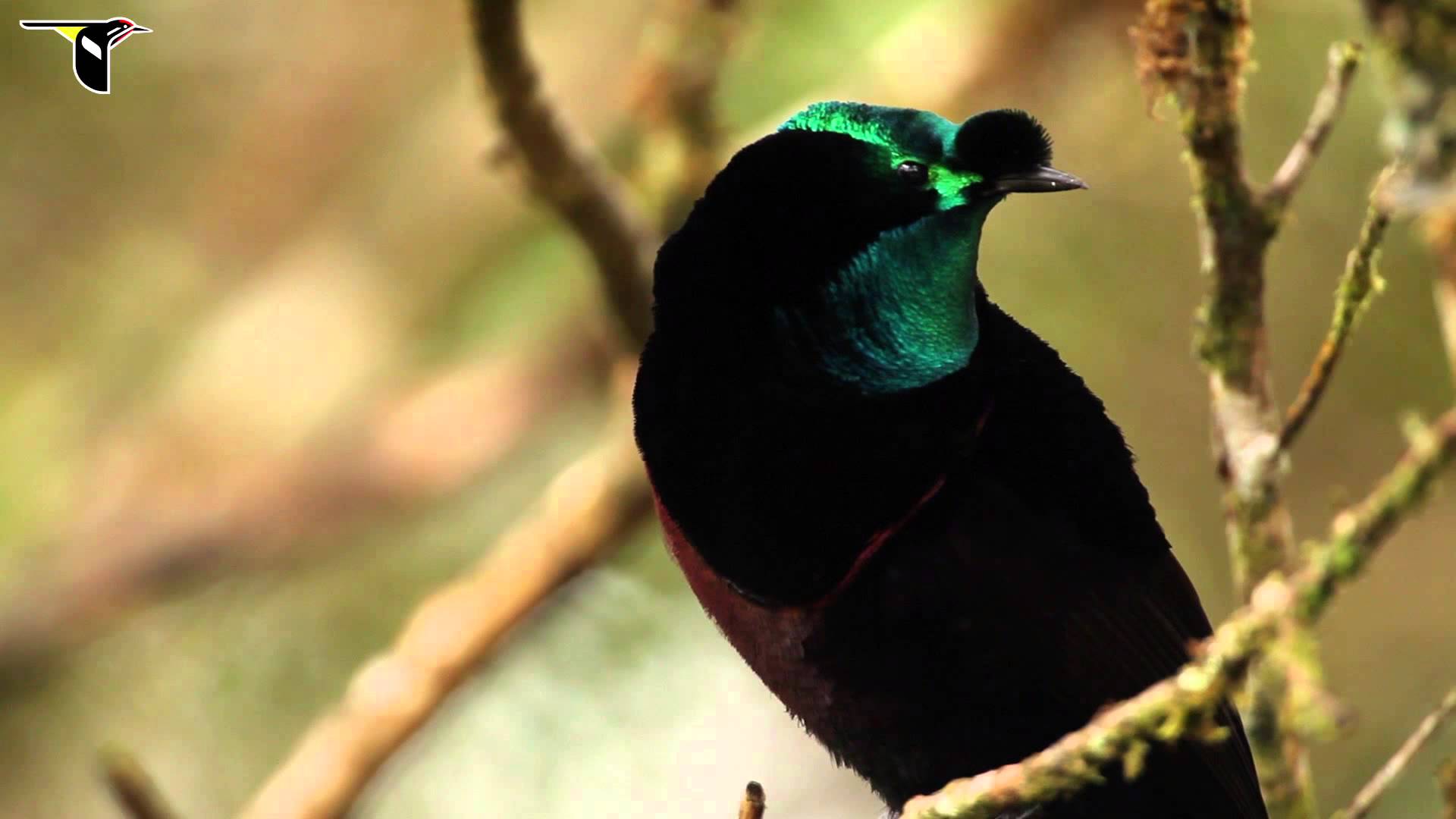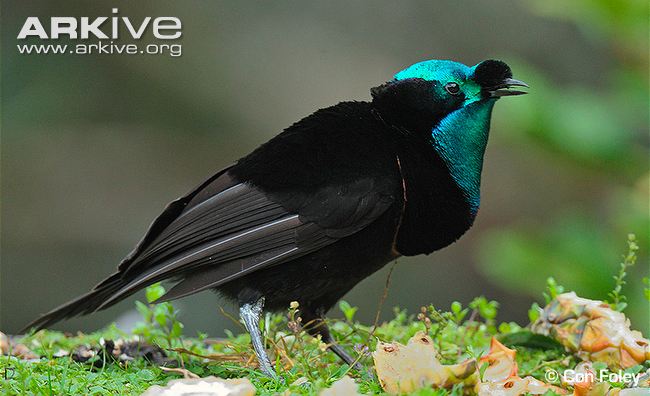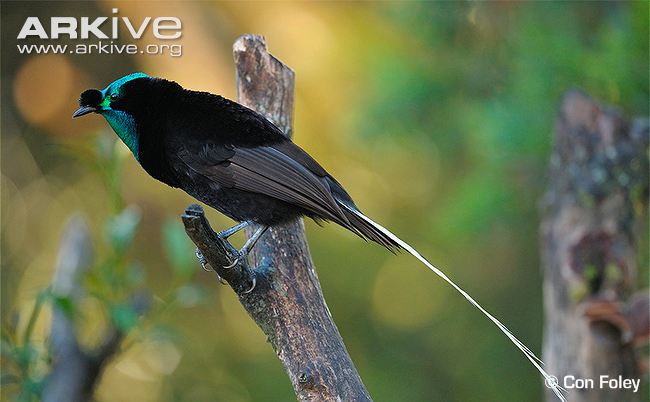
Astrapia mayeri
SUBFAMILY
Paradisaeinae
TAXONOMY
Astrapia mayeri Stonor, 1939, Mount Hagen, Papua New
Guinea.
OTHER COMMON NAMES
English: Ribbon-tailed bird of paradise, ribbon tail; French:
Paradisier а rubans; German: Schmalschwanz-Paradeiselster;
Spanish: Ave del Paraнso Cola de Moсos.
PHYSICAL CHARACTERISTICS
12.6–13.8 in (32–35 cm), but 20.9–49.2 in (53–125 cm) with
adult central rectrices; female 0.23–0.35 lb (102–157 g), male
0.30–0.36 lb (134–164 g). Most easily recognized by the male’s
long, black-tipped white tail feathers, which are at least three
times the length of the bird. Head, throat, and tuft “pompom”
over the base of the bill is black with intense metallic
yellowish green iridescence. Olive-brown upperparts and black
breast with coppery-red border. Deep green and copper abdomen
to vent. Females duller, with brownish plumage and
shorter tail.
DISTRIBUTION
Only an area of the central cordillera of western Papua New
Guinea, from Mounts Hagen and Giluwe to Doma Peaks and
the southern Karius Range, at altitudes of 5,900–11,320 ft
(1,800–3,450 m).
HABITAT
Upper montane and subalpine moss forests, forest edges and
patches, including disturbed vegetation.
BEHAVIOR
Not yet clear if adult males, which do have traditional display
locations and perches, are solitary displaying or do so in twos
or larger numbers. Courtship involves males repeatedly hopping
between tree perches; displays recorded during June
through September. Extensive flight is by shallow undulations
consisting of four to six audible, wing beats followed by a brief
downward glide with closed wings; horizontally trailing central
rectrices of adult males wave and ripple in the air.
FEEDING ECOLOGY AND DIET
Mostly lone individuals, but sometimes two to five birds, forage
acrobatically on fruits and arthropods at all levels of the forest
structure. Fruit possibly represents more than 50% of the diet.
Arthropods and small vertebrate animals are obtained by probing/
tearing into foliage, wood, and epiphytic vegetation.
REPRODUCTIVE BIOLOGY
Polygynous with promiscuous (probably lekking) males and
exclusively female nest attendance. Breeding known during at
least May through March. Often nests in isolated saplings, with
no immediately adjacent tree branches or foliage, where the
forest canopy is typically lacking directly above. On average,
nest is 10–59 ft (3–18 m) above ground. Nest is a deep, substantial,
open cup. The clutch is a single egg. In captivity, incubation
lasts 21 days and the nestling period is 24 days.
CONSERVATION STATUS
Common to abundant in optimal habitat but geographically
highly restricted and habitat is limited. Listed as Near Threatened.
SIGNIFICANCE TO HUMANS
Tail plumes of adult males are highly prized for personal
adornment by highland men who trade dried skins.
Other popular Animals
Photo Gallery of - Ribbon-tailed astrapia




 Animalia Life
Animalia Life